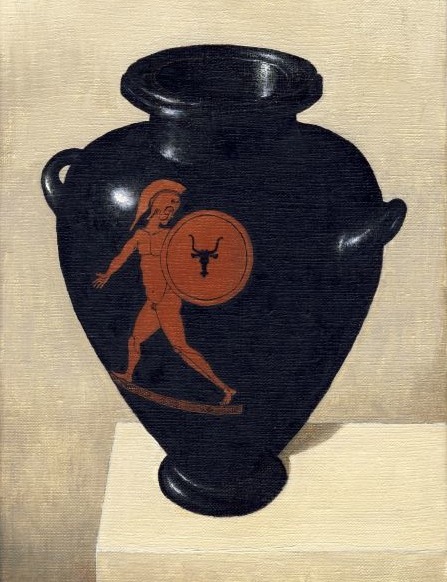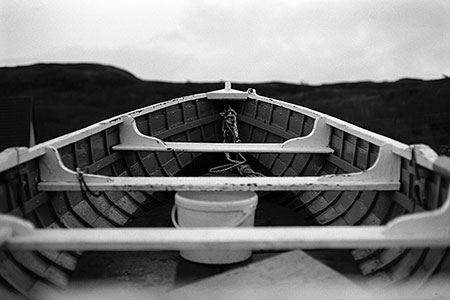Posted by Angela Ferreira on January 12th, 2007
Pardon me everyone to come across with this interruptive out of schedule post but something struck my head today and I just can’t shut up!!!
For the readers here just have to put up with my insanity, thank you very much! Pleasure!
Why do we need criticism?
Let’s say, look at the following picture, forgetting it’s a photograph:
more… »
Posted by Karl Zipser on January 11th, 2007

Earlier we came to an informal consensus that children’s art is not real “art.” I don’t see that as a problem, but it makes me curious: what are children doing when they draw? To try to get some insight, I’ve been drawing together with Nino and Fran. more… »
Posted by Karl Zipser on January 10th, 2007

Who is the most influential art blogger? Ed Winkleman, of course. I haven’t been following his blog as closely as I would like to, but yesterday I took a look and the title of his recent post Art About Art got me excited. I’ve been working on an essay about this general subject “art about art”, and I wondered if I had been scooped. In fact, there was no connection; Winkleman’s post could have been titled “Art about making art,” how artwork depicting artists “caught in the act” of creation tells us about how artists did what they did. In my own experience this is a fruitful avenue for research, because there is much to be learned about studio practice from old paintings, (how to store brushes in linseed oil, for example, or how the palette was laid out in the 15th century). There is also much to learn from ancient art about the making, painting, and firing of ancient Greek ceramics.
Back to art about art — the concept of depicting art in art opens a lot of possibilities. The imaginary vase painting still life above is an example. I have long been fascinated by Athenian vase painting because of the potential of the vase to act as a “frame” for drawings and paintings on the vase itself. This fascination led me to a long love affair with ceramics and kiln building — that’s for another time though. The painting above is a technical study in how to paint a representation of a vase with oil colors on canvas. The form of the vase is based on studies of a stamnos in a museum in nearby Leiden, while the “red figure painting” is based on a painting on an amphora in the same museum. I studied these ancient objects by drawing in my sketchbook at the museum, then created this fantasy synthesis in my studio.
In fact, I worked out the rough form of the vase together with Hanneke van Oosterhout in a large painting we did together. I made this study to develop the technique for painting the vase before overpainting it in the large painting.
Every blog post should end with a question, right? Okay then, what do you think about Ed Winkleman’s blog? Or, what do you think about “art about art”? Or, what do you think of collaborating on artwork?
…
related post: Art about art and doing a 180
Posted by Colin Jago on January 9th, 2007
Posted by David on January 9th, 2007
If you could hang out for an evening talking with any living person (or persons), who would your top 5 choices be? Here’s my list:
- Thomas Pynchon
- Brian Eno or Stewart Brand (or both)
- Woody Allen
- Joni Mitchell or Leonard Cohen (or both)
- the Dalai Lama
Who would you choose?
Posted by Steve Durbin on January 9th, 2007

In a recent post, Hanneke showed us a beautiful pencil drawing of three pears. In the comments, she and Karl expressed interest in comparing this drawing with a photograph. I decided to experiment along these lines, and above I’ve posted a first result (click on the image for a larger view). I plan to vary a number of factors involved in creating the image; you can help me decide what would be interesting to try.
In this first effort, I used one of Hanneke’s tricks: a dark background. The pears were ones I happened to have in the house, and are different from Hanneke’s, not as nice in shape. I used a similar arrangement to hers, with natural illumination from a nearby window. I’m not thrilled with my composition, but I didn’t take much time, and I can do a better job when I come back to this. Please give me your thoughts on things you like or don’t like about the composition.
more… »
Posted by Karl Zipser on January 8th, 2007
How to Care for Brushes

- Turpentine Trouble?
- Storing Brushes
- Cleaning Brushes
- Shaping Brushes
- Transporting Brushes
I have been doing pretty well with my New Year’s resolutions: to draw, paint, sculpt and photograph each day. Part of the key is to make the energy barrier for each activity as low as possible. With painting in oil, an important consideration is, how to clean my brushes?
Here is what Cennino Cennini wrote (probably in the 14th century):
. . . have a plate of tin or lead which is one finger deep all around, like a lamp; and keep it half full of oil, and keep your brushes in it when idle, so that they will not dry up.
In Cennino Cennini’s time, artists did not use organic solvents for oil painting. To keep their oil painting brushes from drying up, they stored them in linseed oil. A slight improvement on Cennini’s method is to have the hair of the brush in oil, while the handle remains oil free.
The advantage of storing brushes in linseed oil is that it is easier and faster to clean them. The painter does not need to remove the oil, only the pigment.
How do you clean your brushes?




